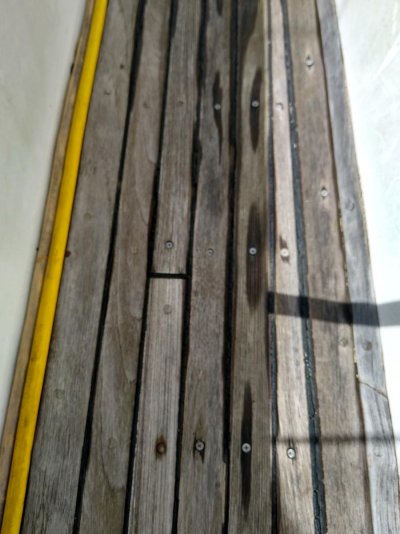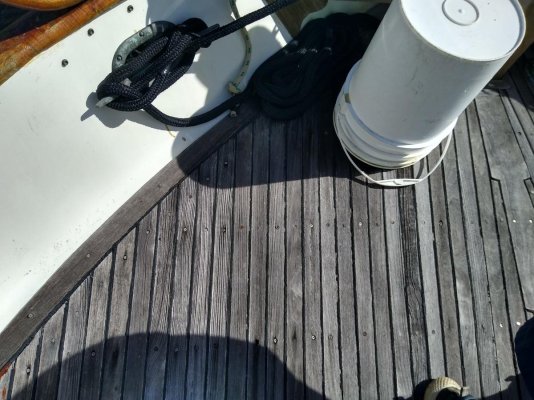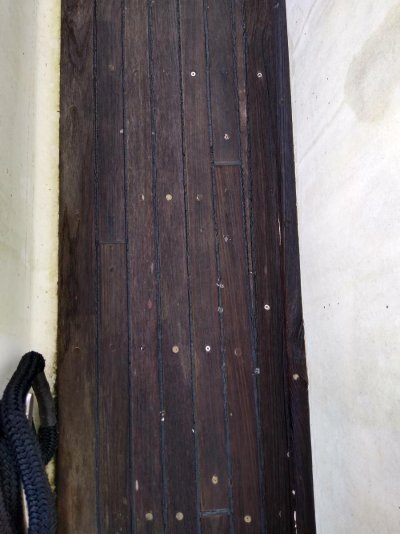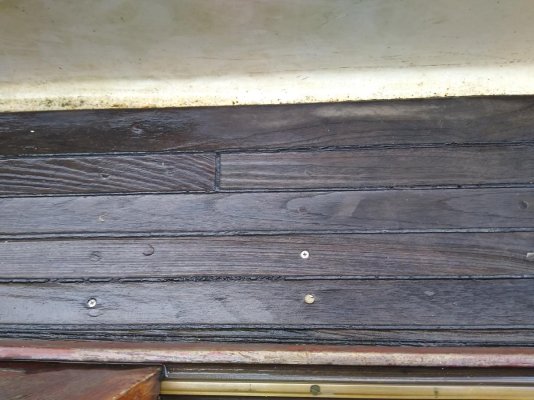calicojack767
Veteran Member
So I know there is tons of info on the subject as I have searched and read pros and cons. I have recently begun to step aboard trawlers for a future purchase. For my own personal reasons of not wanting teak I have been avoiding boats that have it. Recently though, I found a trawler in good shape and a good price. I went aboard and examined it in person and what I found in the attached pictures was of course it needs to be redone but it looked saturated (rained heavily here for a couple days) in some areas and just grayed out and dry where it had been in the sun. In between the panels is that black sealant like substance that looks to be in need of replacement (is that normal) as well many of the screws were exposed which would also have to be resealed Im sure. I went below into the salon and cabins and knocked around didn't find any soft spots or water stains showing leaks (minus one soft area near the front cabin sky light about an inch in diameter. Nevertheless my question is this......is the saturation I saw normal if the teak is untreated? I apologize for the lack of knowledge and a possible redundant question but a search only answered more detailed questions rather than a "is this a normal teak thing" type question. It only has teak flooring on the main deck so if its doable I may "compromise" on the teak no teak personal debate.




